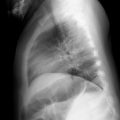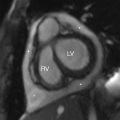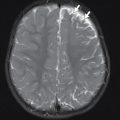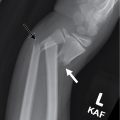Exposure to ionizing radiation
Exposure to ionizing radiation is a natural consequence of living on Earth. We are exposed to ionizing radiation from the Earth beneath our feet, from the air we breathe, from materials within our own bodies, and from space. Background radiation from natural sources varies by location and is generally greater at higher elevations. For a person in the United States, the estimated average background radiation exposure from natural and manmade sources is approximately 3 mSv/year.
In 1982, natural background radiation contributed most of the public’s exposure to ionizing radiation, and the average annual diagnostic medical exposure per person in the United States was estimated to be 0.54 mSv. By 2006, the contribution of radiation exposure from diagnostic medical procedures in the United States had increased by almost six times, to approximately 3 mSv per person per year. This increased medical radiation exposure was largely due to computed tomography (CT) and nuclear medicine procedures. Although CT procedures represented only 15% of diagnostic procedures, CT contributed over half of the cumulative diagnostic procedure dose. At one hospital, although CT accounted for only 15% of the diagnostic radiology procedures, CT contributed approximately 75% of the total effective dose.
Risks of ionizing radiation exposure and ALARA
The primary concern for exposure of patients to ionizing radiation is the risk of cancer induction. Children are considered to be at greater relative risk from radiation exposure than adults are. Children are smaller and incur a greater effective dose per body mass unit than do adults for a given exposure. As children are growing, they have a greater proportion of dividing cells and are considered more sensitive to radiation-induced carcinogenesis. Children also have more life years ahead of them, giving them a longer time to develop the late effects of radiation exposure or to be further exposed to ionizing radiation. There is debate among experts over the risk of cancer induction from medical imaging, but there is agreement that we should act cautiously, assuming risk. Although there are no absolute defined limits for patient radiation exposure, the goal is that radiation exposure from diagnostic imaging should be kept “as low as reasonably achievable” (ALARA).
ALARA: Justification and optimization
To achieve ALARA goals, a test involving ionizing radiation should be performed only when medically justified and the radiation exposure from a medical test should be kept as low as possible to still achieve a diagnostic result. Justification is the process of ensuring that the examination to be performed is appropriate, with potential benefit to the patient that is greater than the risk presented by the examination. To assist in justification, clinical decision support tools are helpful, including summary recommendations, clinical decision rules, and appropriateness criteria. As part of justification, one considers whether a test is necessary or whether use of an alternative test without exposure to ionizing radiation, such as ultrasound or magnetic resonance imaging, may be diagnostic.
Once an examination is justified, imaging technique is optimized to ensure adherence to ALARA principles. As part of optimization, it is important to tailor technique to patient size while ensuring that the examination is still of diagnostic quality. This applies to all modalities using ionizing radiation. As CT contributes a significant portion of the diagnostic medical radiation dose to individuals and populations, it is important to decrease radiation dose due to CT. There are many mechanisms that can decrease radiation dose due to CT, the first of which is to do only indicated (justified) examinations.
Optimization of CT scanning to decrease dose also includes centering the patient in the CT scanner, using CT automatic exposure control systems, limiting scan length to the area of interest and eliminating multiphase examinations (which are rarely necessary in the pediatric population). More recent CT scanners also use iterative reconstruction technology, in which the computer makes “several passes” through the data, improving signal-to-noise ratio, and improving the quality of images from lower dose scanning.
Most CT equipment manufacturers now provide pediatric-specific technique guidelines or protocols, but pediatric CT protocols are also readily available, such as those provided by the American Association of Physicists in Medicine.
American college of radiology dose index registry®
For a facility, benchmarking CT dose performance against that of other facilities provides valuable information to guide CT protocol optimization. The American College of Radiology Dose Index Registry (DIR®) was established in 2011 and serves as a tool for quality improvement. Through the DIR, facilities can review dose indices and optimize their CT imaging protocols. Facilities download the DIR program software, which allows them to upload scanning data automatically. This allows the collection of dose index information across facilities but does not collect individual patient doses or identifiable patient data. The facilities receive quarterly feedback through the DIR, which gives them the opportunity to compare their CT practice and dose metrics to those of other facilities, regionally and nationally. In addition, facilities can get online feedback from the DIR at any time.
Image gently
The Image Gently Alliance is a coalition of health care organizations dedicated to providing safe, high-quality pediatric imaging worldwide, with the primary objective to raise awareness of the need to adjust radiation dose when imaging children. The Image Gently website ( www.imagegently.org ) can be used as a resource for parents, radiologists, and referring physicians to learn more about imaging studies and radiation exposure in children.
Application of ALARA
Applying ALARA principles can result in a very real change in practice. In a study of application of ALARA guidelines over a period of 6 months, two pediatric radiologists reviewed CT requests for adherence to “justification” and “optimization.” Out of 1392 individual anatomic part CT requests, 111 CT requests from 105 pediatric patients were avoided. Thus, 8% of patients were protected from unnecessary radiation exposure by applying ALARA principles.
In the United States, a long-term positive effect of the application of ALARA principles has been demonstrated. The prior upward trend of increasing dose from medical radiation seen from 1980 to 2006 has declined, with the estimated per capita dose in the United States in 2016 lower than in 2006, decreasing from 2.9 mSv in 2006 to 2.3 mSv in 2016.
Summary
Although there is controversy over the degree of risk from exposure to ionizing radiation from medical imaging in children, there is agreement that we should act cautiously, with the goal that radiation exposure from diagnostic imaging should be kept “as low as reasonably achievable” (ALARA). Justification is the process of ensuring that the diagnostic examination to be performed is appropriate, with potential benefit of the examination greater than potential risk. Once an examination is justified, optimization of examination technique is then utilized to ensure adherence to ALARA principles.
References
Stay updated, free articles. Join our Telegram channel

Full access? Get Clinical Tree








